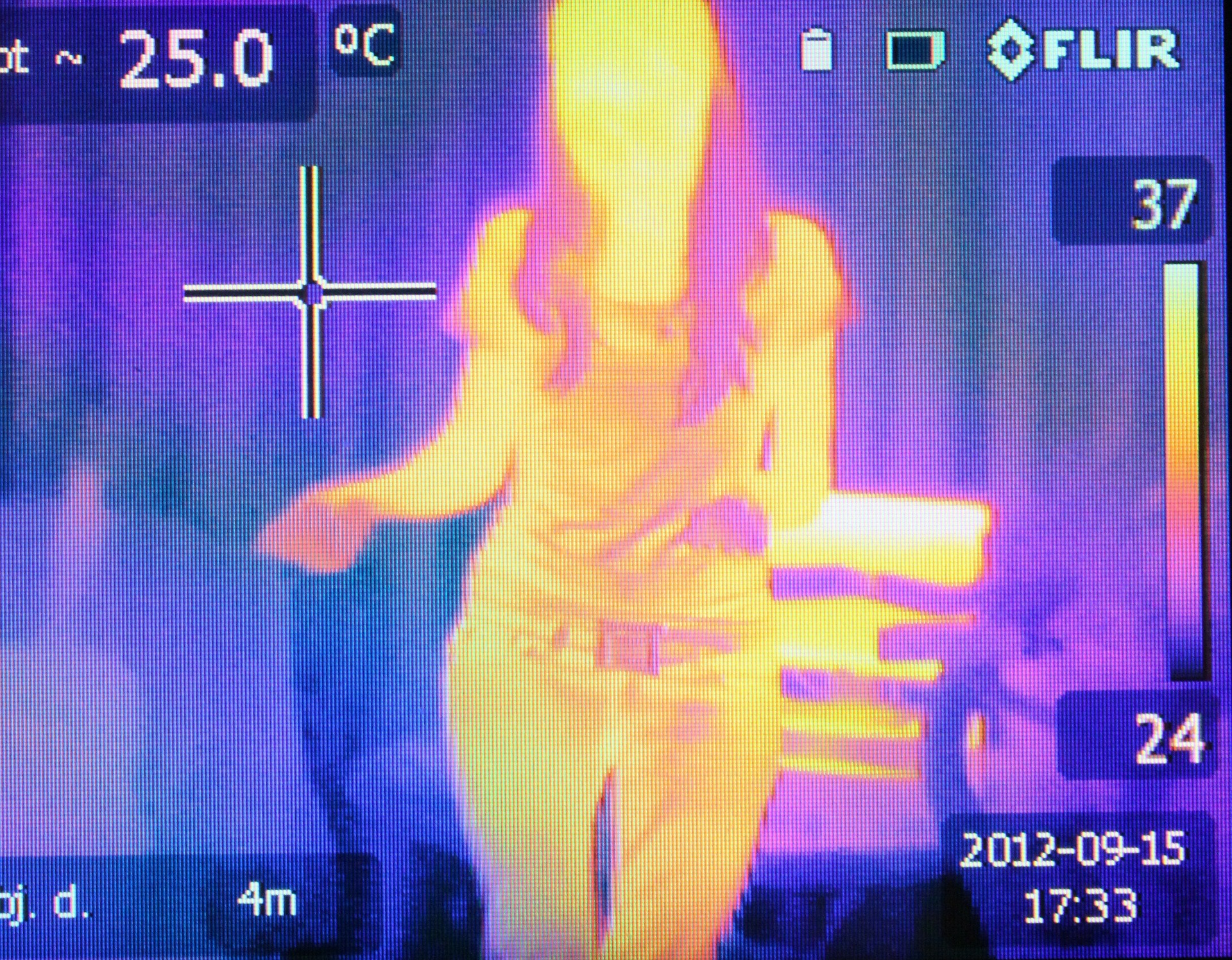MAGIC: the wonders of infrared camouflage
The MAGIC project aims to develop a camouflage technique against infrared cameras. Mines Saint-Etienne is using its expertise in the optical properties of materials to achieve the project’s objective. Funded by the DGA and supported by the ANR, MAGIC primarily focusses on military applications. Jenny Faucheu, a researcher on the project at Mines Saint-Étienne, explains the scientific approach used.
Infrared detection is particularly known for its application in thermal cameras. How do these cameras work?
Jenny Faucheu: They are based on thermography, which is used in thermal diagnosis, for example. The technique produces colorful images that indicate thermal radiation. The principle of cameras that produce this kind of image is based on the capture of distant infrared wavelengths: these are wavelengths of light that are greater than those of visible light, and correspond to the electromagnetic radiation of an object whose temperature is in the region of ten to several hundred degrees. The image displayed reflects the quantities of these wavelengths.
The ANR MAGIC project aims to develop a camouflage technique against this type of detection. What is this exactly?
JF: We use a material based on vanadium dioxide. It has thermochromic properties, meaning that its ability to emit infrared rays will change according to the temperature. More precisely, we use a polymorph of this vanadium oxide – a particular crystalline form. When heated to above 70°C, its crystalline form changes and the material passes from 80% energy radiation to 40%, making it appear colder than it actually is on thermal cameras. 40% radiation from an object at 75°C will still correspond to less radiation than 80% of an object at 65°C. This is one of the two camouflage properties we aim to develop.
What is the other camouflage property you are working on?
JF: Thermographic cameras that produce multicolor images are not the only cameras based on infrared emission. The other detection mechanism is the one used by cameras that produce grayscale night images. These cameras amplify near-visible infrared wavelengths and display them in white in the image. Things that emit no infrared radiation are displayed in black. If there is not enough energy to amplify on the image, the camera emits a beam and records what is reflected back to it, a bit like a sonar. In this case, even if the vanadium oxide material emits less radiation, it will still be detected because it will reflect the camera beam.
How can you ensure discretion faced with this second type of camera?
JF: We need to work on the surface texture of the materials and their structure. The approach we use consists in laser texturing the vanadium oxide material. We shape the surface to disperse the infrared rays emitted by the camera in different directions. To do this, we are working with Manutech-USD, which has a laser texturing platform capable of working on large and complex parts. Since the beam is not reflected back towards the camera, it is as though it had passed straight through the object. As far as the camera is concerned, if it receives no reflection there is nothing in front of it. Objects that should be displayed in white in the image without camouflage will instead be displayed in black.
What applications do you foresee for this work?
JF: MAGIC is a response to the ASTRID call, whose projects are funded by the Directorate General for Armaments (DGA). The planned applications are therefore essentially military. We are working with Hexadrone to build a surveillance drone like those found in stores… a stealthy one. We also want to show that it is possible to reduce the thermal signature of engines and infantrymen. By adding a few tungsten atoms to the vanadium oxide material, the temperature for crystalline form change can be decreased from about 70°C to about 35°C. This is very practical for potential human applications. A normally dressed person would appear at 37°C on a camera, but a suit made of this special material could make them undetectable by making them appear much colder.




Leave a Reply
Want to join the discussion?Feel free to contribute!